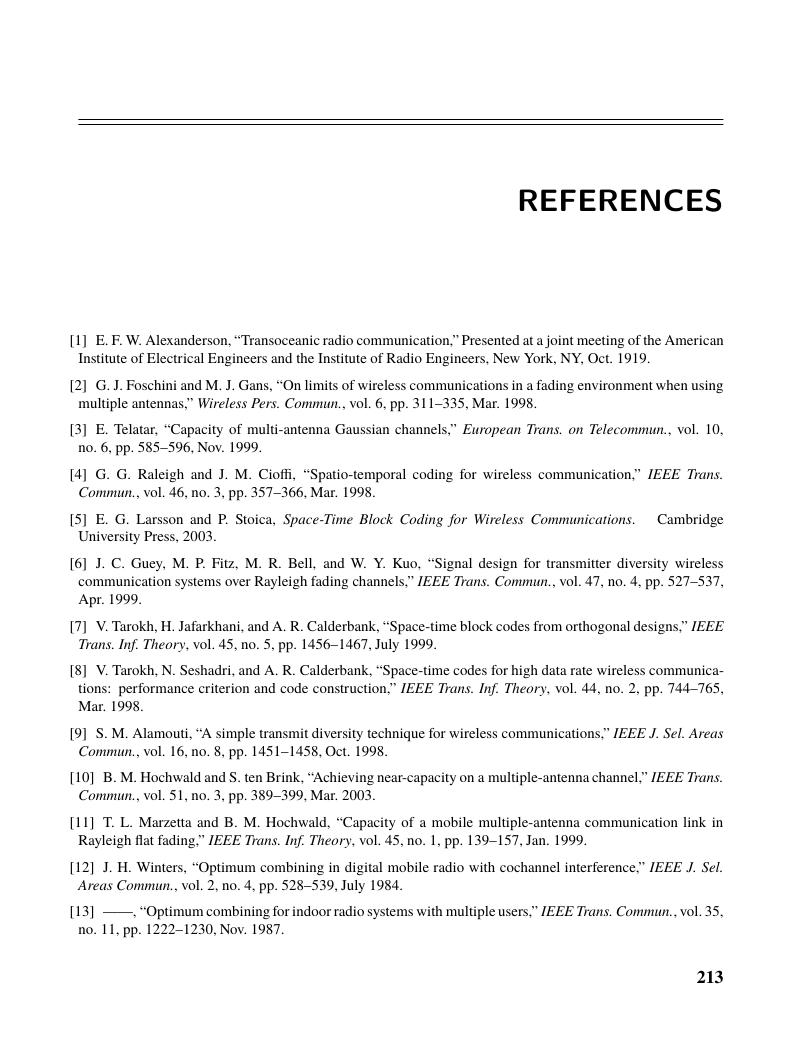Book contents
- Frontmatter
- Contents
- Figures
- Tables
- Preface
- 1 Introduction
- 2 Models and Preliminaries
- 3 Single-Cell Systems
- 4 Multi-Cell Systems
- 5 Power Control Principles
- 6 Case Studies
- 7 The Massive Mimo Propagation Channel
- 8 Final Notes and Future Directions
- A Circularly Symmetric Complex Gaussian Vectors
- B Useful Random Matrix Results
- C Capacity and Capacity Bounding Tools
- D Alternative Single-Cell Capacity Bounds
- E Asymptotic Sinr in Multi-Cell Systems
- F Link Budget Calculations
- G Uniformly Distributed Points in A Hexagon
- H Summary Of Abbreviations and Notation
- References
- Index
- References
References
Published online by Cambridge University Press: 03 November 2016
- Frontmatter
- Contents
- Figures
- Tables
- Preface
- 1 Introduction
- 2 Models and Preliminaries
- 3 Single-Cell Systems
- 4 Multi-Cell Systems
- 5 Power Control Principles
- 6 Case Studies
- 7 The Massive Mimo Propagation Channel
- 8 Final Notes and Future Directions
- A Circularly Symmetric Complex Gaussian Vectors
- B Useful Random Matrix Results
- C Capacity and Capacity Bounding Tools
- D Alternative Single-Cell Capacity Bounds
- E Asymptotic Sinr in Multi-Cell Systems
- F Link Budget Calculations
- G Uniformly Distributed Points in A Hexagon
- H Summary Of Abbreviations and Notation
- References
- Index
- References
Summary

- Type
- Chapter
- Information
- Fundamentals of Massive MIMO , pp. 213 - 222Publisher: Cambridge University PressPrint publication year: 2016



